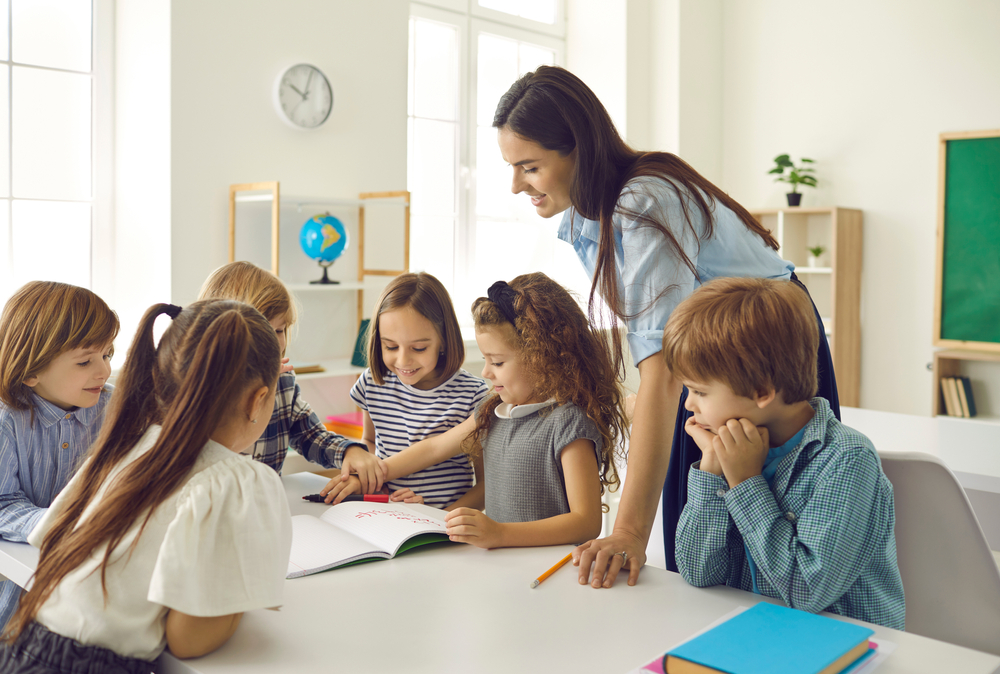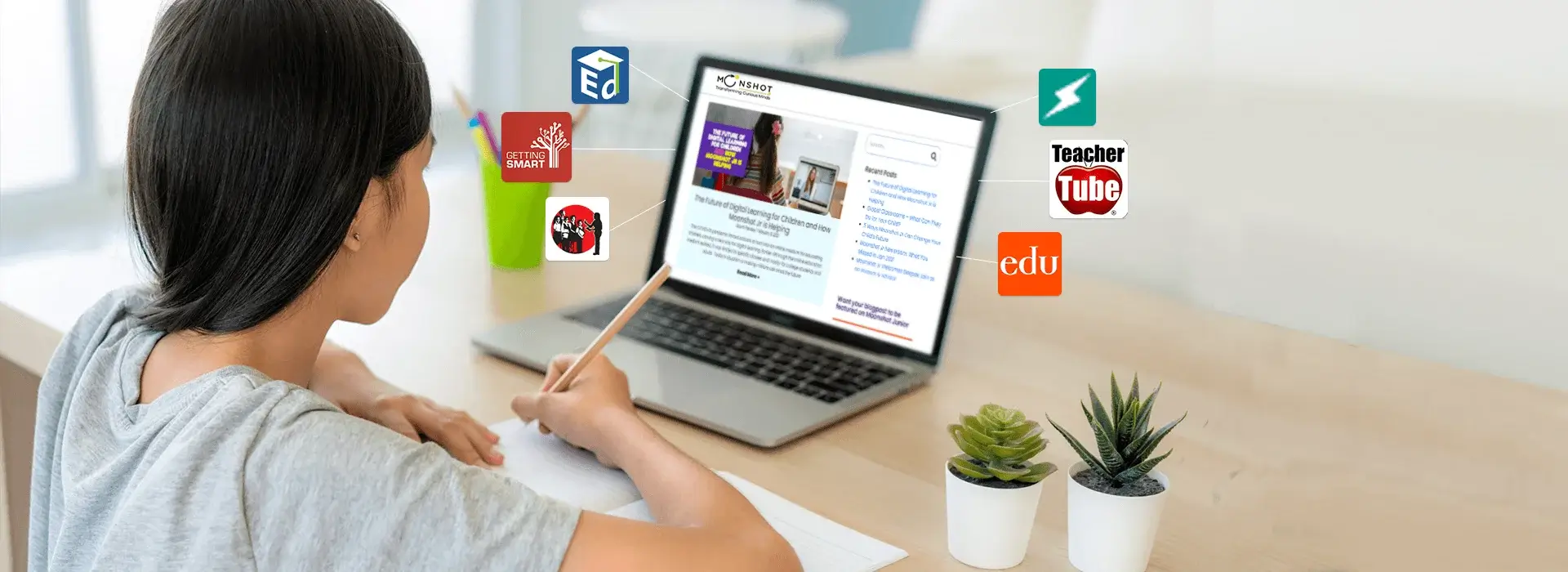
Can you picture a classroom where students are the drivers of their learning, explore their interests, and are empowered to lead their own education? A classroom where students learn by doing, and teachers guide them in their transformative journey. This is the essence of student-centered learning. It’s a revolutionary approach that places students at the forefront of their learning adventure. In this blog, you will learn about the power and potential of this innovative method of student-centered learning and how it is reshaping the future of education.
According to Springer Open, a significant 21% of students used e-learning, 37% used virtual learning, and 42% used online learning. This diagram provides information about the distribution of different forms of education and helps understand which forms are the most popular and in demand in the educational environment. The popularity of e-learning is a testament to its relevance and potential in the modern educational landscape.

Future Scenarios of Student-centered Learning
The report outlines four possible future scenarios based on current trends in higher education:
- Growth: Higher education institutions continue to expand, with hybrid learning increasing, but they need improvements in equitable access.
- Constraint: Institutions reorganize around a critical principle, like climate change, focusing on flexibility and changing priorities.
- Collapse: Higher education faces major breakdowns due to technological and economic shifts, reducing the need for formal institutions.
- Transformation: Society changes its expectations of education, with skills like creativity and innovation becoming more valued due to advancements like AI.
These scenarios are explored in detail, followed by expert essays on the impact of trends in areas like learning spaces, equity, digital connectivity, adult learners, research, and technology in under-resourced schools.
Carl Rogers on Student-learning
”The only person who is educated is the one who has learned how to learn and change.”
BENEFITS OF STUDENT-CENTERED LEARNING
Student-centered learning is an innovative method of learning. Transforming passive learners into active explorers helps students in multiple ways. Let us discuss the benefits of SCL in detail. Here are the benefits-

- Improved Student Engagement: Student-Centered Learning (SCL) boosts engagement by giving students control over their learning. By connecting lessons to real-life interests and providing meaningful feedback, SCL encourages curiosity, leading to better attendance, motivation, and academic success.
- Enhanced Critical Thinking and Problem-Solving: SCL helps students develop critical thinking and problem-solving skills by making them active learners. They tackle real-world challenges, collaborate with peers, and explore different solutions, fostering independence and deeper thinking.
- Better Academic Performance: SCL improves academic performance by making learning personalized and engaging. Students actively participate in discussions and projects, allowing them to grasp concepts fully, leading to better retention and higher grades.
- Increased Student Autonomy: SCL empowers students to take control of their education by choosing what and how they learn. This builds confidence, encourages independence, and allows them to explore their passions while still collaborating with classmates.
- Preparing Students for the Future: SCL prepares students for the future by developing essential skills like critical thinking, creativity, and teamwork. Through hands-on learning, they gain real-world experience, adaptability, and a lifelong love of learning
The Key Principles of Self- Centered Learning

- Personalized Learning: Personalized learning tailors education to each student’s needs and interests. Students choose topics they like, learn at their own pace, and set goals. With personalized support from teachers and a focus on feedback, this approach makes learning more engaging and effective.
- Collaborative Learning: Collaborative learning brings students together to share ideas and work as a team. This boosts critical thinking and social skills and builds a sense of community. By learning together, students help each other grow and make education more meaningful.
- Self-Directed Learning: Self-directed learning encourages students to take control of their education. By setting their own goals and reflecting on their progress, students become independent learners, ready to tackle challenges and think critically.
- Real-World Applications: Real-world applications make learning practical and relevant. Students work on hands-on projects, solve real-life problems, and build essential skills like communication, teamwork, and creativity, preparing them for future challenges.
Challenges of Student-Centered Learning and How to Overcome Them

PROBLEMS
SOLUTIONS
Noisier Classrooms: SCL can lead to a noisier environment, but this is a sign of engaged students.
Embrace the energy as it fosters active learning and productivity.
Classroom Management: Managing an SCL classroom may take more time.
Set clear norms and encourage students to take responsibility for their projects to reduce the workload.
Uneven Knowledge Levels: Students may learn at different paces.
Offer personalized learning and encourage peer mentoring to ensure all students progress together.
Difficulty Adapting: Some students may struggle with the change.
Introduce SCL techniques gradually to help them adjust smoothly.
Strategies and Methods used for Student-Centered Learning
- Project-Based Learning: Project-based learning makes education hands-on and engaging. Students work together to solve real-world problems, boosting creativity and critical thinking.
- Flipped Classroom: Flipped classrooms shift traditional teaching by having students study materials at home and use class time for hands-on activities and discussions.
- Experiential Learning: Experiential learning uses hands-on activities and real-world experiences to make education more impactful. Students learn by facing challenges, reflecting, and collaborating, building critical thinking and communication skills for real-world success.
- Gamification: Gamification adds a game-like element to learning with points, badges, and challenges. This fun approach boosts motivation and helps students develop skills like critical thinking and teamwork while making education more exciting.
Interesting fact about Student-Centered Learning (SCL)
A study conducted by the National Survey of Student Engagement (NSSE) found that students who engaged in student-centered learning environments were 1.5 times more likely to report higher levels of engagement. Additionally, 82% of students in these environments showed significant improvement in critical thinking, problem-solving, and collaborative skills compared to traditional learning models.
How is Student-Centered Learning different from Traditional Learning ?
In traditional learning, teachers lead lessons, and students rely on them for knowledge and development. Student-centered learning (SCL) shifts this, allowing students to take charge of their learning journey while teachers guide them.
- Focus of Learning:
In SCL, students actively pursue their interests, set goals, and explore topics that resonate with them, fostering curiosity. Traditional learning focuses on lectures, with students passively absorbing information. - Role of the Teacher:
In SCL, teachers are facilitators who encourage discussions and exploration. Traditional teachers are the main authority, delivering content with less student involvement. - Learning Environment:
SCL classrooms are dynamic, with group work and collaboration. Traditional classrooms are structured and focused on lectures with limited interaction. - Assessment Methods:
SCL uses diverse assessments like projects and peer evaluations, focusing on growth. Traditional learning relies on standardized tests, emphasizing grades over understanding. - Pace and Personalization:
SCL allows students to learn at their own pace, making learning personalized. Traditional learning follows a set pace, which can be limiting for some students. - Learning Outcomes:
SCL develops critical thinking and real-world skills, while traditional learning focuses on memorization and exam preparation.
Recommended Reading : Montessori vs. Traditional Education
Conclusion
We can conclude that student-centered learning and traditional learning offer different approaches to education. SCL fosters an engaging and interactive experience that empowers students to take charge of their learning, while traditional learning adheres to a more rigid, teacher-directed
approach. By understanding these differences, educators and parents can better support students in their educational journeys, helping them sustain in an ever-evolving world.
Moonpreneur is dedicated to transforming conventional education, preparing the next generation with comprehensive learning experiences. Our Innovator Program equips students with vital skills in AI/ML, Robotics, Coding, Game Development, and App Development, fostering entrepreneurship through hands-on learning. This initiative aims to cultivate the workforce of tomorrow by integrating innovative technologies and practical skills in school curriculums.
Register for a 60-minute free workshop today!


























Blog doesn’t cover the importance of ongoing teacher training in implementing student-centered methods. Teachers often need new skills and strategies to handle the shift from traditional to student-led classrooms effectively.
This blog doesn’t mention how technology, like educational apps and digital collaboration tools, can support this approach. Platforms like Google Classroom, for instance, help teachers manage student-led activities while giving students easy access to resources and assignments.